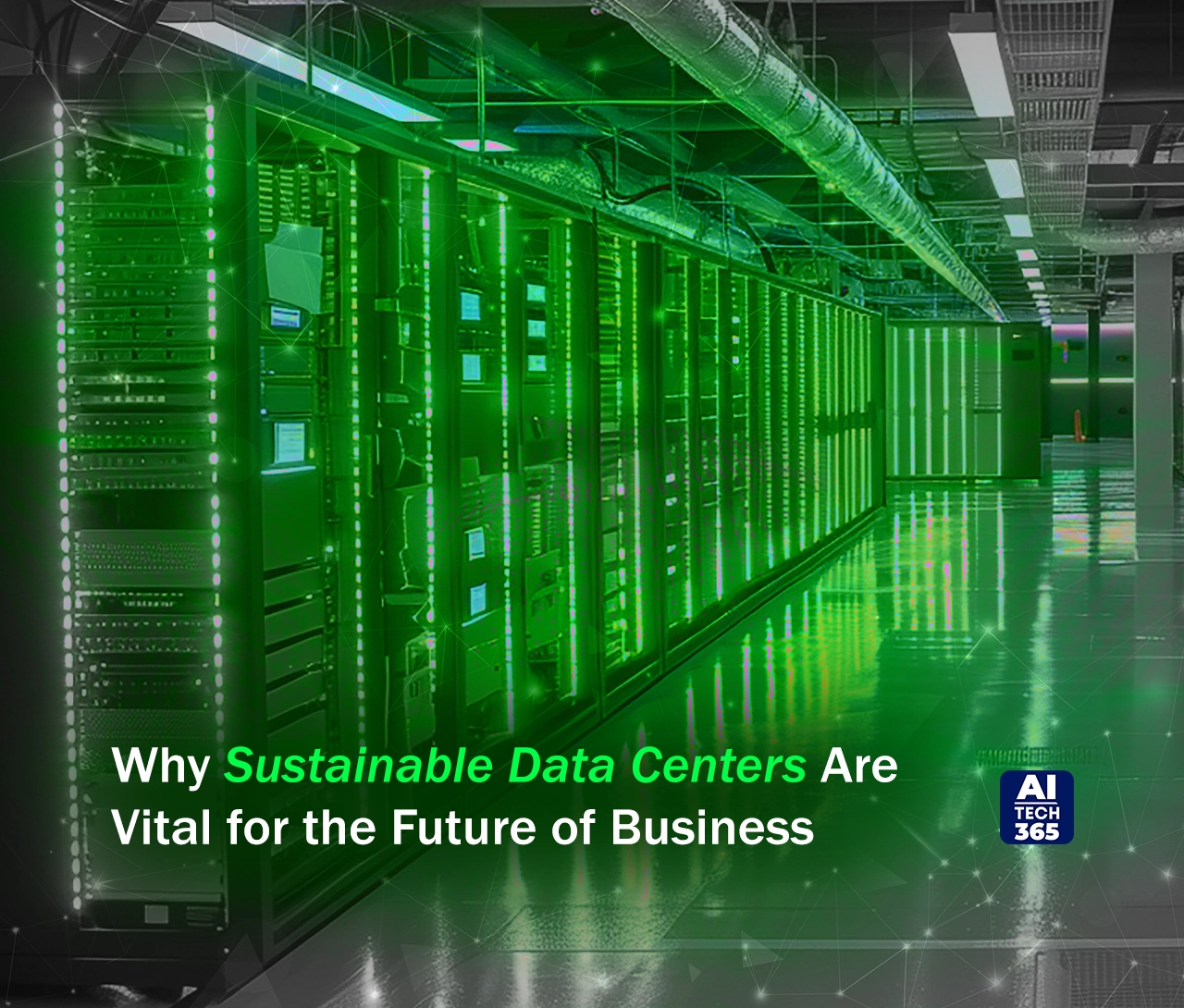In today’s digital landscape, data centers are the critical infrastructure powering everything from cloud storage to streaming media. But as essential as they are, data centers also come with a hefty environmental cost. With massive energy consumption and a high carbon footprint, their impact on the environment is substantial. This is where sustainable data centers take center stage.
Let’s learn more about the data centers. We’ll explore their impact on the environment and recent developments. We’ll also look at what will power AI data centers.
What is a Sustainable Data Center?
A sustainable data center, also known as green data center, is a facility that contains IT infrastructure. It uses energy-efficient tech to maximize energy use and significantly reduce environmental impact.
Organizations can save money and reduce waste by maximizing energy use. To achieve this, they should implement technologies in data centers. These include virtualization, energy-efficient tech, and renewable energy sources.
Benefits of Sustainable Data Centers
- Cost savings: Green data centers lower costs by optimizing resources and boosting energy efficiency.
- Decreased environmental impact: Green data centers lower carbon footprints and electronic waste. They protect natural resources by using eco-friendly practices in their construction and operations.
- Energy efficient: Green data centers are more energy efficient. They use less energy, which helps the environment.
- Enhanced sustainability: Data centers’ long-term viability is ensured by the focus on equipment reuse, responsible recycling, and sustainable building practices.
Environmental Impact of Data Centers
● Energy Consumption
Data centers are energy hogs. Their computers and cooling systems must run constantly to maintain ideal temperatures. Power Usage Effectiveness (PUE) is a metric that compares the overall facility energy usage to that of the IT equipment. It is frequently used to quantify the energy intensity of data centers. Greater energy efficiency is indicated by lower PUE values.
Data centers’ energy use has soared. They are trying to meet the high demand for computing power. Both the environment and operating expenses will be significantly impacted by this. Due to their energy usage, data centers’ carbon footprint has emerged as a key topic in sustainability discussions.
● Water Usage
Another essential resource that is directly related to data center operations is water. A data center uses a lot of water for cooling systems. These systems control server temperatures and prevent overheating. Data center water use can put a strain on local resources and cause water stress in areas with limited water supplies.
In recent years, there has been a surge in efforts to improve data center cooling efficiency and decrease water consumption. New cooling technologies, like advanced heat exchangers and evaporative cooling, could reduce data centers’ water usage. As data centers grow, sustainable water management techniques become increasingly crucial.
Also Read: AI Data Centers: What Are They and Could They Be Harming Our Planet?
Sustainable Data Centers: Major Practices
As the environmental impact of data centers becomes clearer, the need for sustainable data centers to reduce their carbon footprint is urgent. The technology and sustainability measures that data centers can use to reduce their environmental impact are discussed below.
● Renewable Energy Adoption
Adopting renewable energy sources is one of the best strategies for data centers to lower their carbon emissions. Using clean energy sources can greatly reduce data centers’ carbon footprints. Hydropower, wind, and solar are ideal alternatives. Numerous well-known tech firms have already made the commitment to use only renewable energy to power their data centers.
Renewable energy makes data centers energy independent. It protects them from volatile energy prices and lowers greenhouse gas emissions.
Common methods for using renewable energy in data centers are:
- Power purchase agreements (PPAs).
- On-site renewable energy installations.
● Energy-Efficient Hardware
Reducing data center energy consumption is mostly dependent on energy-efficient hardware. This covers networking equipment, servers, storage devices, and cooling systems. Manufacturers are developing more energy-efficient hardware. These include processors with better cooling and lower power consumption.
Data center operators can boost energy efficiency by using smart power management systems, virtualizing servers, and regularly replacing hardware. Energy-efficient hardware cuts costs and supports environmental goals.
● Cooling Solutions
A large amount of the energy used in a data center is used by cooling systems. Sustainable cooling systems aim to reduce energy use. They also keep ideal operating temperatures.
Methods like liquid cooling, free cooling, and aisle confinement are gaining immense popularity. They lower the energy used for cooling.
Innovations like liquid cooling are becoming popular. It uses non-conductive coolants to cool more effectively. These solutions reduce the need for cooling towers. They boost energy efficiency and save water.
● Energy Storage and Backup Systems
Sustainable data centers can save energy and reduce grid reliance during peak demand by using energy storage, like flywheels and batteries. These devices stabilize the grid. They store extra energy from off-peak hours and release it during high-demand times.
Also, backup power systems like microgrids and fuel cells can cut emissions. They can also boost data center resilience. Data centers can use microgrids to generate their own power during outages. This will ensure continuous operations.
What Makes Sustainable Data Centers?
The idea of sustainable data centers by design has received a lot of attention in the technology industry. A green DC is a traditional data center. It is designed for maximum energy efficiency and minimal environmental impact. This applies to its infrastructure, location, fittings, and equipment.
Data centers currently use about 3% of the world’s energy. Recent tech advances by major players and pureplay data centers have kept electricity demand flat. They have also formed the compelling value proposition that comes with running a green DC.
Some of the latest advancements in green DCs are:
- Green Power: To cut costs and improve sustainability, data centers have relied on efficiency metrics. However, pureplay datacenter players have begun to innovate. They are exploring green power procurement due to the internet’s rapid growth and increased business use.
- Waste Recycling: Other energy systems can make use of the surplus heat that is released from data centers. The extra heat can be used to heat neighboring buildings. This is for data centers in the Crown Dependencies, which have colder climates (District Heating). Bahnhof in Sweden has done this by pumping extra heat to nearby buildings. Bahnhof has also worked with the local district authorities to seize the opportunity.
- Use of IoT, AI, and ML for forecasting energy use: Leading tech companies have successfully reduced their data centers’ Power Usage Effectiveness (PUE) statistics by strategically combining the Internet of Things (IoT), artificial intelligence (AI), and machine learning (ML). Google has reduced cooling energy use by 40% and overall energy consumption by 15% with the usage of DeepMind AI.
Wrapping it Up
In data centers, sustainability has become a need rather than an option. As the digital world grows, sustainable data centers aim to significantly reduce their impact on the environment.
Data centers can be more sustainable. They can do this by:
- lowering carbon emissions,
- using renewable energy,
- focusing on energy efficiency, and
- adopting advanced technologies.
Sustainable data center technology appears to have a bright future. This is due to ongoing advancements and growing awareness. While preserving the vital services that underpin our digital lives, the industry can achieve notable environmental gains as more businesses make the commitment to sustainability.

